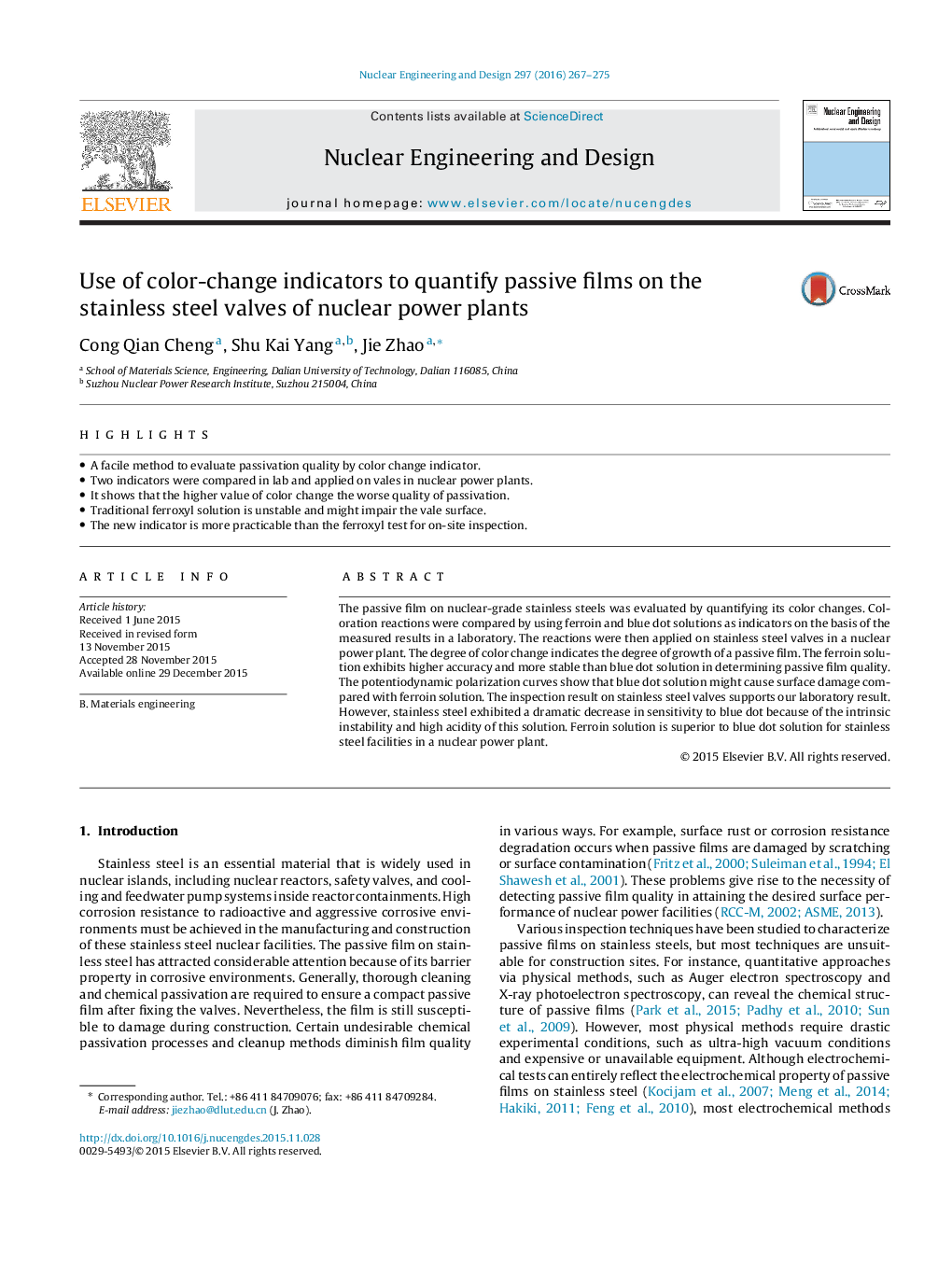| کد مقاله | کد نشریه | سال انتشار | مقاله انگلیسی | نسخه تمام متن |
|---|---|---|---|---|
| 296050 | 511704 | 2016 | 9 صفحه PDF | دانلود رایگان |
• A facile method to evaluate passivation quality by color change indicator.
• Two indicators were compared in lab and applied on vales in nuclear power plants.
• It shows that the higher value of color change the worse quality of passivation.
• Traditional ferroxyl solution is unstable and might impair the vale surface.
• The new indicator is more practicable than the ferroxyl test for on-site inspection.
The passive film on nuclear-grade stainless steels was evaluated by quantifying its color changes. Coloration reactions were compared by using ferroin and blue dot solutions as indicators on the basis of the measured results in a laboratory. The reactions were then applied on stainless steel valves in a nuclear power plant. The degree of color change indicates the degree of growth of a passive film. The ferroin solution exhibits higher accuracy and more stable than blue dot solution in determining passive film quality. The potentiodynamic polarization curves show that blue dot solution might cause surface damage compared with ferroin solution. The inspection result on stainless steel valves supports our laboratory result. However, stainless steel exhibited a dramatic decrease in sensitivity to blue dot because of the intrinsic instability and high acidity of this solution. Ferroin solution is superior to blue dot solution for stainless steel facilities in a nuclear power plant.
Journal: Nuclear Engineering and Design - Volume 297, February 2016, Pages 267–275
